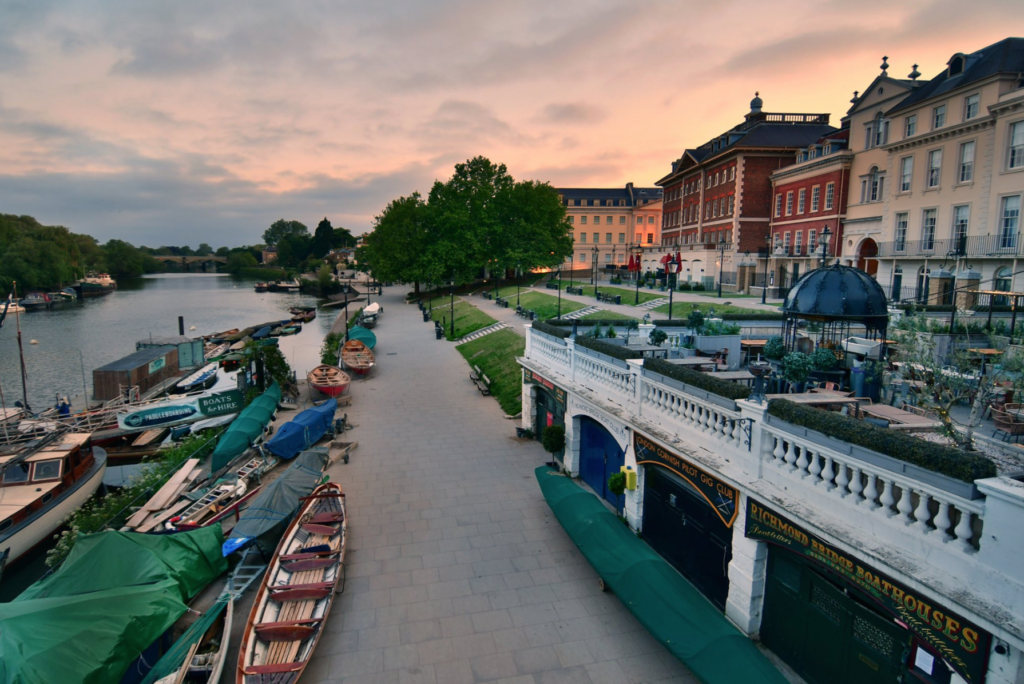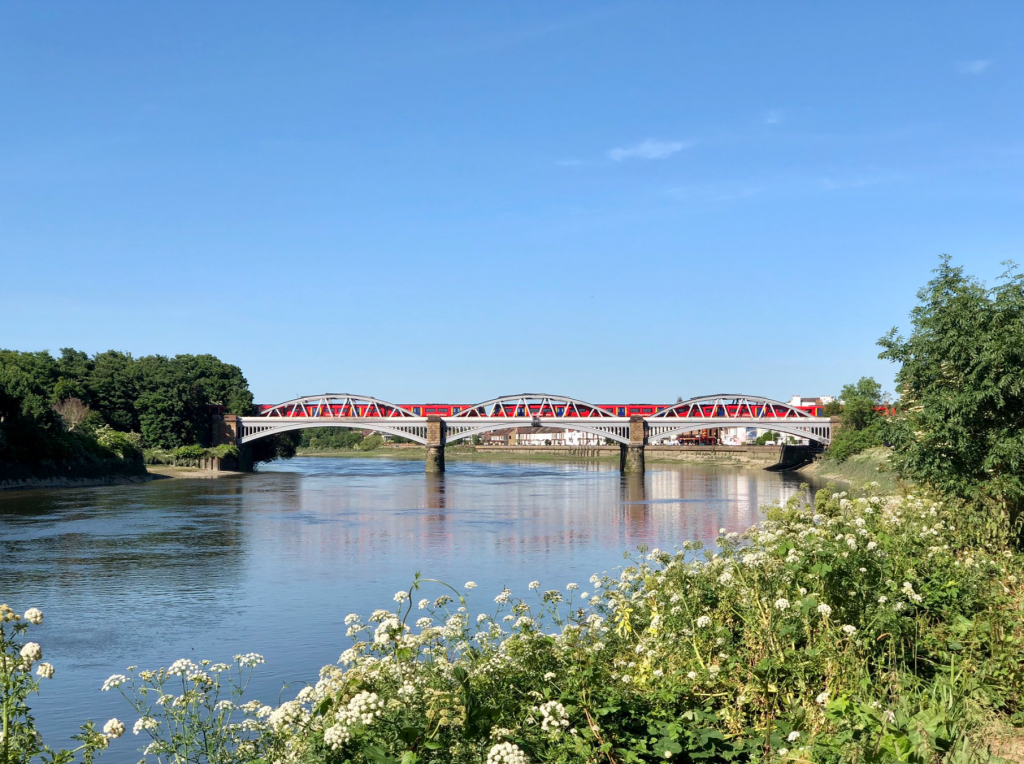… in local park Victoria Tower Gardens
March 23 – April 30, 2020
In a somewhat belated effort by our government to control the spread of the deadly virus Covid-19, our world changed overnight. ‘Lockdown’, ‘social distancing’, and ‘super-spreader’ entered the everyday lexicon. Advertisements warning that we were in a state of “National Emergency” now flooded the media. Movements were restricted to essentials: among them we were allowed to exercise once a day in a local area or park as long as the newly-introduced two-metre rule of separation was respected.

We were lucky. Close by are the lovely Victoria Tower Gardens, next to the Palace of Westminster by the Thames. Open to all, they were particularly appreciated at this time by the many residents here without gardens. My husband and I have walked there every morning since lockdown and here are some of pictures to illustrate our section of the river during that time and what, if anything was happening there.

The first thing we noticed was the absence of traffic noise, usually busy rumbling over Lambeth and Westminster Bridges, and along Millbank behind us. No planes overhead either. The relief of a silence in which we could hear the rustling of leaves, the occasional splash of water along the shore, and much birdsong: tuneful blackbirds taking us back to childhood country summers, blue tits hidden among the shrubberies, raucous crows and intermittent high-pitched squeaks from green parakeets.



‘Social distancing’ was the key message. Group gatherings were not allowed and everyone had to stay at least two metres apart to cut down the risk of infection. Another sign read: “If you do not adhere to these guidelines, we will have no choice but to close the parks.” These rules were quite closely, but not aggressively, policed in Victoria Tower Gardens as there were security considerations due to their proximity to Parliament. The rules were followed and the park remained open.

The Thames Marine Services’ static refuelling barge, there to provide fuel and lubricants, was bereft of clients, as it floated in the newly imposed stillness.
From the first lockdown days, our hour-long visits seemed to coincide with one of the Metropolitan Marine Policing Unit patrols, and often one of the London Port Authority vessels, overseeing the safety of the river. Both performing vital services, they could be seen as usual from the very beginning of the restrictions.


Our walks often coincided with the Cory, tugs too, as they were either towing barges of bright yellow empty containers upstream to collect waste from their depots, or towing loaded containers downstream to their ‘Energy from Waste’ facility at Belvedere. The collection of domestic rubbish, an essential service for the health of our city, continued as usual from Westminster and elsewhere, and its transportation along the river was kept going as before.

There seemed to be more wildlife than usual. Cormorants were robustly defending their Palace of Westminster markers as they have been doing for a long while but there were more geese and ducks on the foreshore.



Towards the middle of April, nearly a month into lockdown, there were more signs of boat life on the river. Boats dealing with river safety and obstacle clearance, or maintenance of building works further upstream, began to appear.



These images are simple snapshots of the activity seen during our *permitted* hour-long visits to Victoria Tower Gardens. Depending on the tides and the time of day, there were of course other essential movements on the river. Yet while we were there resting beneath the plane trees, for the most part there was an overriding sense of calm serving as a counterbalance to the frightening daily statistics of new infections and deaths from the Coronavirus pandemic that was sweeping the country. We were not alone in being grateful that Victoria Tower Gardens, a very special park, was carefully maintained and kept open throughout.

***********************
Further information:
Many others have documented their impressions of lockdown including:
Photographer Bill Green who has a special portfolio on: “Locked Down London”.
Photographer Andrew Wilson in an article for Time & Leisure Weekend explores the effect of lockdown on nature in the London area of Barnes.









